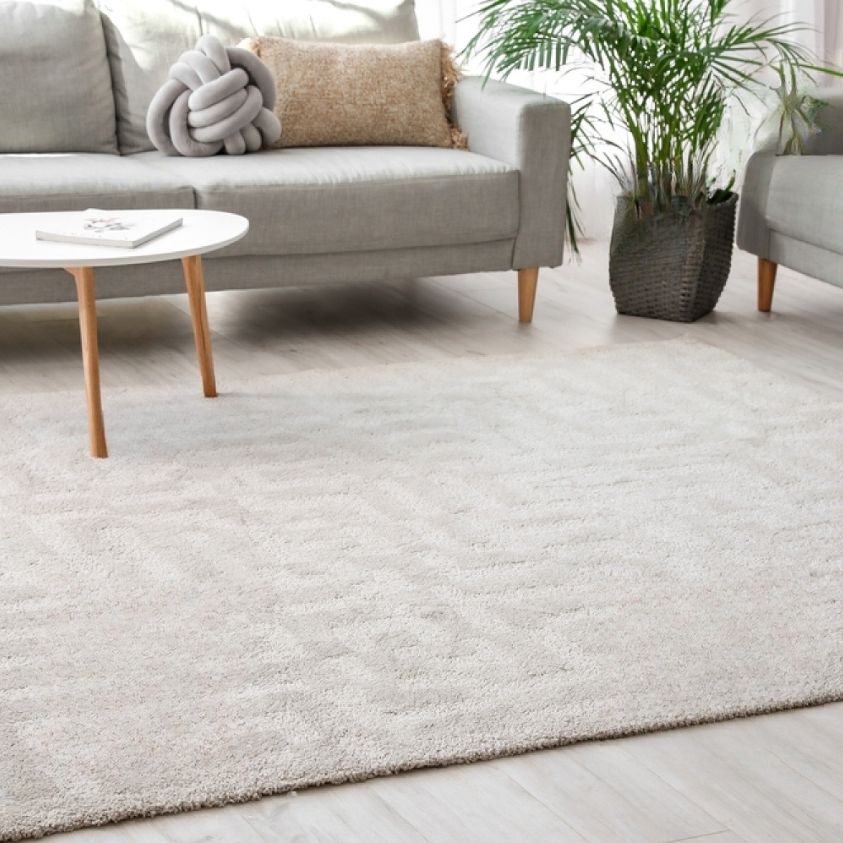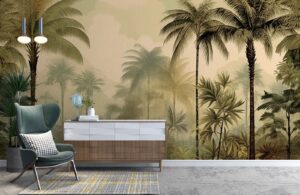
In the world of interior design, the use of natural elements has gained tremendous popularity in recent years. It’s a trend that’s more than just a passing fad; it’s a design philosophy that brings the beauty and tranquility of the outdoors into our living spaces. Incorporating natural elements into interior design not only creates a sense of harmony and balance but also promotes well-being and a connection to the environment. In this article, we will explore the various ways to infuse your interior spaces with the essence of the natural world.
The Importance of Natural Elements in Interior Design
Before delving into the how, let’s first understand the why. Why is it so important to bring natural elements into our interior spaces?
Biophilic Design: The concept of biophilic design recognizes that humans have an innate connection with nature. Incorporating natural elements into our living spaces satisfies this connection, promoting a sense of well-being and calm.
Stress Reduction: Natural elements, such as plants and natural materials, have been shown to reduce stress and anxiety. They create a soothing atmosphere that can improve mental health and overall quality of life.
Aesthetic Appeal: Natural elements, with their timeless beauty, add an aesthetic quality to interior spaces that is both inviting and warm. They can transform a stark and sterile environment into a comfortable and appealing one.
Sustainability: The use of natural, sustainable materials in interior design contributes to a more eco-friendly and sustainable lifestyle. This aligns with the growing emphasis on environmental responsibility.
Variety and Texture: Natural elements introduce a rich variety of textures, patterns, and colors into interior design, making spaces more interesting and dynamic.
The Versatility of Natural Materials
Natural materials are the foundation of incorporating natural elements into interior design. From wood to stone, from leather to jute, these materials not only bring nature indoors but also provide durability and a timeless aesthetic.
Wood: One of the most versatile and widely used natural materials, wood can be incorporated into interiors in various ways. From hardwood floors to wooden furniture, wooden beams to wood-paneled walls, it adds warmth and character.
Stone: Natural stone like marble, granite, or slate can be used for countertops, floors, or feature walls. Its texture and variety make it an ideal choice to add natural elegance to any space.
Leather: Leather furniture and accents can provide a luxurious and tactile experience. The patina of leather develops over time, enhancing its natural appeal.
Bamboo and Rattan: These materials are eco-friendly and add a tropical, relaxed vibe to interiors. Bamboo and rattan furniture, light fixtures, and decor items can create an inviting and laid-back atmosphere.
Jute and Hemp: Natural fiber materials like jute and hemp are used for rugs, textiles, and window treatments. They bring an organic, earthy texture to interior design.
The Impact of Natural Light
Natural light is one of the most fundamental and powerful natural elements in interior design. It can transform a space, enhancing its beauty and functionality.
Maximize Windows: Wherever possible, maximize the use of windows to let in natural light. Consider large, strategically placed windows that allow light to flood into living areas.
Window Treatments: Use light, gauzy curtains or blinds that can be easily adjusted to control the amount of light entering the space.
Mirrors: Placing mirrors across from windows or in locations that reflect natural light can amplify its effects, making the room feel brighter and more spacious.
Light Paint Colors: Choose light, reflective paint colors for your walls. Pale neutrals and whites can bounce natural light around the room.
Indoor Plants: Nature at Your Fingertips
The inclusion of indoor plants is one of the most direct and effective ways to infuse natural elements into interior design. Houseplants not only bring the beauty of nature indoors but also offer various other benefits:
Improved Air Quality: Many houseplants purify the air by removing pollutants and releasing oxygen. They contribute to a healthier indoor environment.
Visual Appeal: The lush greenery of indoor plants adds visual interest and life to any space. They can serve as focal points or blend seamlessly into the decor.
Mental Well-being: Caring for plants and having them in your environment has been linked to reduced stress, increased creativity, and improved mood.
Choose a variety of indoor plants, from low-maintenance succulents to leafy, air-purifying varieties, and find the right spots in your home to display them.
The Allure of Natural Colors
Natural colors, inspired by the world around us, can significantly impact the ambiance of interior spaces. Incorporate the following color schemes to infuse your home with the soothing and harmonious colors of nature:
Earthy Tones: Colors like warm browns, sandy beiges, and soft greens can evoke the feel of natural landscapes. Use these hues on walls, furniture, or decor items.
Ocean Blues: Shades of blue and teal reflect the colors of the ocean and sky. They bring a sense of tranquility and freshness to interiors.
Forest Greens: Deep green shades are reminiscent of lush forests. They can be used as accent colors for furniture or textiles.
Sunset Hues: Warm, sunset-inspired colors like oranges, pinks, and reds create a cozy and inviting atmosphere.
Natural Elements in Furniture and Decor
Introducing natural elements in furniture and decor items is a powerful way to bring nature into your interior design. Here are some ideas:
Wooden Furniture: Opt for wooden furniture made from sustainable sources. Wooden tables, chairs, and cabinets can add warmth and authenticity to your space.
Stone Accents: Incorporate natural stone as accent pieces. Stone tabletops, sculptures, or wall art can serve as focal points.
Organic Textiles: Choose textiles made from natural fibers such as cotton, linen, or wool. They offer comfort and texture and can be used for upholstery, drapery, and throw pillows.
Natural Artifacts: Decor items like driftwood, seashells, coral, or pieces of petrified wood can be used to add a touch of nature to your space.
Natural Fiber Rugs: Sisal, jute, or seagrass rugs can be used to create a connection with the earth. They add texture and can serve as grounding elements in your design.
The Role of Texture
Texture plays a pivotal role in creating a sense of depth and visual interest in interior design. Incorporate the following textural elements to add a touch of nature to your spaces:
Exposed Wood: Showcasing the natural grain and texture of wood, whether in flooring, furniture, or ceiling beams, can create warmth and authenticity.
Stone Walls: Exposed stone walls add a rugged, natural texture to your interiors, making them feel inviting and grounded.
Rough Textiles: Incorporate rough textures like burlap or raw silk in upholstery, drapery, or throw pillows for a tactile connection to nature.
Natural Patterns: Patterns inspired by nature, such as florals, botanical prints, or organic shapes, can add visual interest and a sense of the natural world.
Embrace Imperfections
Natural elements often exhibit imperfections, and these imperfections add character and authenticity to your interior design. Don’t shy away from features like weathered wood, uneven stone, or the unique patterns found in natural materials. These imperfections tell a story and create a connection to the organic world.
Furniture and Decor Layout
When arranging your furniture and decor, consider the flow and arrangement found in nature. Avoid rigid, linear layouts and opt for arrangements that mimic the way natural elements flow. For example, arrange furniture to encourage conversation and interaction, much like how a group of trees may cluster in a forest.
Water Features
If space allows, consider incorporating a water feature into your interior design. A small indoor fountain or a wall-mounted water feature can add a calming and soothing element that is directly inspired by nature.
Conclusion
Incorporating natural elements into interior designing is about creating spaces that are not only beautiful and inviting but also promote well-being and a connection to the environment. Whether through the use of natural materials, houseplants, colors inspired by nature, or textural elements, infusing your interior spaces with the essence of the natural world can transform your home into a haven of harmony and balance. It’s a design philosophy that celebrates the timeless beauty of the natural world while enhancing the quality of life within our own living spaces.




